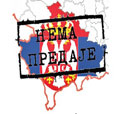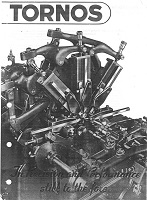|
|
Ukupno su 1242 korisnika na forumu :: 171 registrovanih, 10 sakrivenih i 1061 gosta :: [ Administrator ] [ Supermoderator ] [ Moderator ] :: Detaljnije Najviše korisnika na forumu ikad bilo je 3195 - dana 09 Nov 2023 14:47 - Korisnici koji su trenutno na forumu:
- Korisnici trenutno na forumu: ..Milka.., A.R.Chafee.Jr., airsuba, AleksandarV, aleph_one, Alexa77, Arhiv, Asteker, BAKI89, bavar357, Beardonitch, Belac91, Belisarius, bigfoot, blatruc82, Bobrock1, bojan1234, bojankrstc, bojanM84, bojcistv, Borac1983, Brana01, Bubimir, C-Gun, ccoogg123, celik, Ciri1994, Citalac, CraniumWhite, Dd2011, dearg, Dejan_vw, dekan.m, Despot1, Dežurni pod palubom, Dimitrise93, djuradj, Dogma21, Dolinc, dragan_mig31, draganl, DrNeoCortex, drpera, Drugard72, dule10savic, ElvisP, Ezbuck, Fabius, fokac, g0xy, galerija, Gheljda, goranperović66, GT, Hardenberg, Haris, HrcAk47, Ice, ihis, ILGromovnik, Ilija Cvorovic, istokzapad, ivan_8282, Jakonjveliki, Jaxupa, Jeremiah, Jezekijel, jodzula, Jomini, JOntra, Jozo74, Još malo pa deda, K a s p e r, Kajzer Soze, karevski, Kiki98TZ, kikisp, Kobrim, kybonacci, lanishtefm, larix, Lazur_01, Lieutenant, lucko1, Lucky 6, madza, magyar, Makssd85, Malahit, Mane88, markomacii9, MaschinenPistole, mercedesamg, mgolub, miki kv, mikrimaus, Milan A. Nikolic, milanpb, milenko1980, mileta4, Miletić Zoran, milikonst, Millennium, MILO-VAN, Milometer, milos.cbr, Mis uz pusku, moldway, Mrav Obrad, nemkea71, niksa517, NNPD, nobutado, nuki1234, opt1, orjen, Paklenica, Panter, pceklic, pein, PlayerOne, pobeda, Povratak1912, Prečanin30, raf87, RajkoB, RILE-NS, RJ, sabros, sale_bih, SamostalniReferent, saputnik plavetnila, Semprini, shota91, Sinduk, Sinisa76, Sir Budimir, Sićko, sluga, Smajser, sova72, srpskasparta, sspp, Stanlio, TBF1D, tehnika, Teodor60, Teodorasim, TheBeastOfMG, Topaz9, Toper, travisrise, Tribal, Trpe Grozni, TRZH92, Underwood, vathra, Vatreni Zmaj, Vilson, vladivostok, Vlado82, vlahale, Wiesel092, XBMC, XiaomiX, Zgembo78, zhuki8, zlaya011, zoran77, Zrcalo, Zukov
|





















